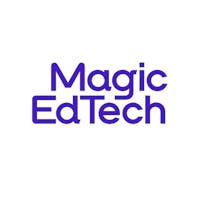Companies that are committed to diversity, equity and inclusivity (DEI) provide products and services that authentically and accurately reflect the learners they serve—whoever they are and wherever they live. These organizations have developed and embedded coherent and consistent principles to clearly define DEI content and DEI-attentive products. They have shaped and promoted editorial guidelines for the products they fashion, which will land in the hands of educators and students.
Such institutions recognize the importance of meeting learners where they are—and the positive impact this has on outcomes. Importantly, these companies are pursuing equitable access to their products and content, regardless of identity, geography, race, religion, socioeconomic background, etc. They proactively plan for a diverse customer base and do not treat accessibility as an afterthought. In essence, companies that promote DEI within their own company and through their products and services believe that everyone should be treated with respect and be given an equivalent opportunity to succeed.
What does DEI symbolize, and what does a DEI initiative encompass?
DEI, in general, can translate to different actions for every company, but all initiatives are rooted in the same values. Shari Eberts, a hearing health advocate and speaker, offers guidance through these definitions:
Diversity is the presence of differences that may include race, gender, religion, sexual orientation, ethnicity, nationality, socioeconomic status, language, (dis)ability, age, religious commitment or political perspective.
Equity promotes justice, impartiality and fairness within the procedures, processes and distribution of resources by institutions or systems.
Inclusion means that those who are diverse feel welcome.
Organizations that embrace the promotion of DEI tend to establish and follow a core set of guiding principles, particularly in the creation of their educational products, that resemble the following:
- Respect for human rights; they endeavor to create content that is free of discrimination, implicit or explicit prejudice and bias.
- Development of content that manifestly embeds a commitment to diversity, equity and inclusivity.
- Support for learning that is evidence-based, using the best available research for student learning.
From these principles, more specific guidelines may emerge:
- Ensure that employees and customers feel a sense of belonging, both in the organization and in their own communities.
- Ensure that everyone has an equal opportunity to succeed in the company and/or through the use of the products they create.
- Develop products and services that represent the diversity of learners being served.
- Bend the development of content toward social justice.
Taken together, this might at first appear to represent a solid first step on a DEI journey—a set of clear goals and definitions. And while admirable, the above list on its own quietly suffers an omission in practice: accessibility. Assistive conceits can no longer be an afterthought; they must become an integral part of any conversation regarding DEI initiatives.
People with physical or cognitive challenges have unique and important qualities that help constitute their identities and contribute to their perspectives. In addition, people with (dis)abilities are not monolithic; they are diverse, and they deserve the proactive presence of inclusion and equity in the products they consume and the companies with which they engage.
How is accessibility incorporated into your definition of diversity, equity and inclusion?
Leaders across the education ecosystem recognize the importance of putting achievement within the reach of all students. However, despite an increased focus on DEI strategies, that focus often leaves the differently-abled student on the periphery, due to a lack of considerations relative to accessibility.
DEI should mean the inclusion of—and the opportunity to succeed for—everyone, including those with various physical or cognitive challenges. More robust definitions of diversity and inclusivity are needed—definitions that encompass both educational content and digital accessibility. Looking at emerging edtech trends relative to DEI, we need to understand how accessibility is being addressed (or not) and provide strategies to help ensure that it is prioritized. This requires a focus on content, design and user experience.
To learn how to implement an accessibility program for your organization, download our whitepaper.
Magic EdTech reshapes learning solutions for clients during different stages of their product and platform journey. We work with educational publishers, edtech companies and institutions to focus on building content and technology that is “born accessible.” Exemplifying our motto “Digital Learning for Everyone,” we lead by example, with a diverse, multicultural, differently-abled workforce wherein everyone is given the same opportunities to succeed.
We can audit your content and platforms for compliance and help you create products that reach all differently-abled learners. We can augment your product to the next level of DEI. By prioritizing accessibility, you ensure compliance with local, national and international accessibility laws, thereby expanding your product reach—and you’ve also done the right thing.
Magic EdTech has been a leader in creating and remediating accessible technologies in the edtech space for almost 30 years. Our team includes IAAP-certified experts in accessibility who focus on inclusion every day. And the members of our content development team have diverse backgrounds and mountainous collective experience in education, helping them consider all users in their writing. We have served over 200 clients in the past three decades, with over five million product users worldwide.
Our organization strives to create opportunities that ensure that the rights of people with differing abilities are included in DEI conversations and definitions. We are committed to humanity’s pursuit of happiness by making lifelong digital learning accessible, affordable and sustainable for everyone.



